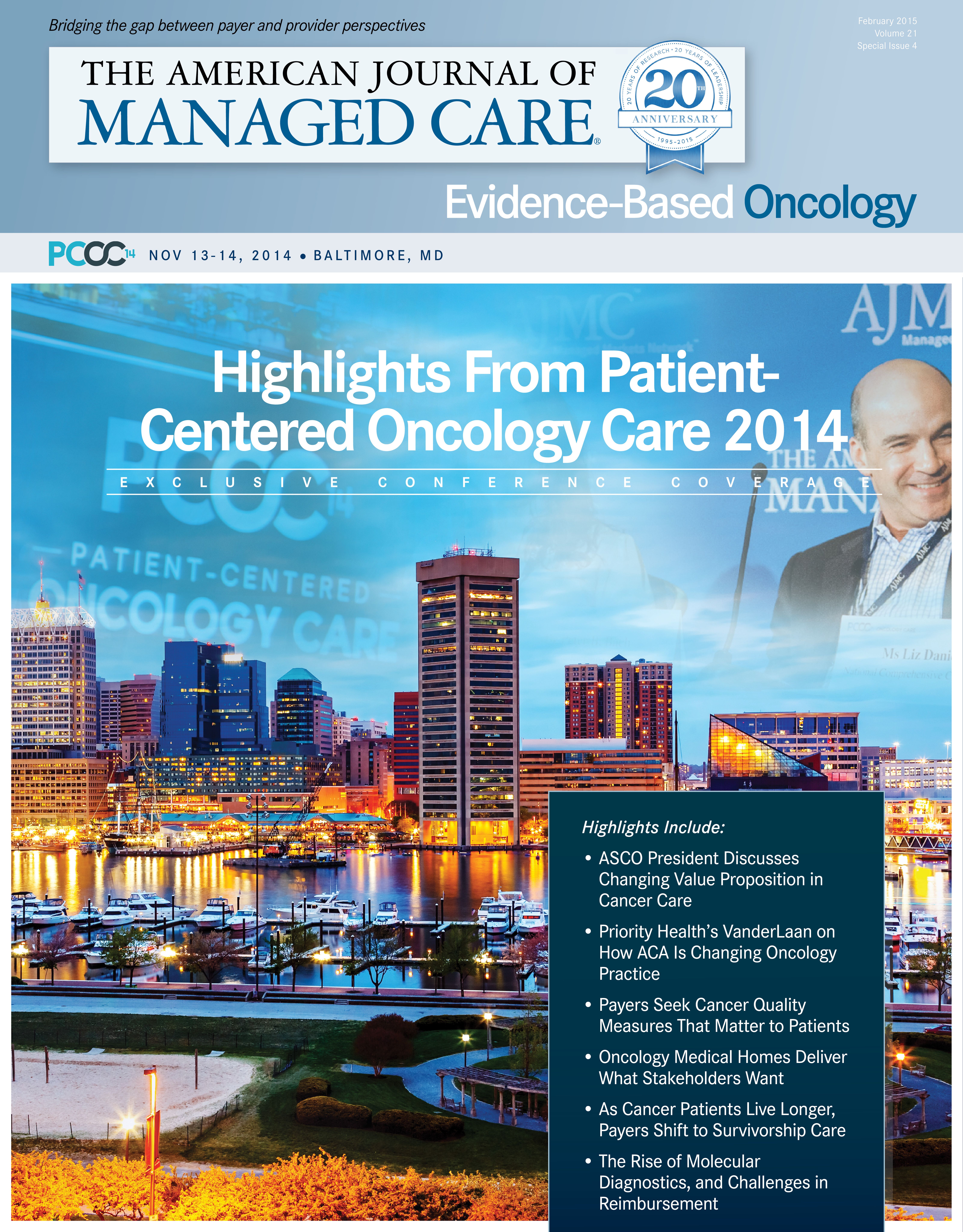Publication
Article
Evidence-Based Oncology
Resistance to Guidelines Ebbs, but "Less Is More" Approach May Help Cancer Care Providers
Author(s):
Today’s cancer specialist faces a proliferation of clinical care pathways, which payers see as a way to help control costs. Pathways, which may offer incentives if physicians follow them, exist alongside guidelines from the National Comprehensive Cancer Network (NCCN) or the American Society of Clinical Oncology, and now quality measures. All are well intended, but how much is too much? And where do patients fit in? Moderator Jan Berger, MD, MJ, editor-in-chief of The American Journal of Pharmacy Benefits, explored these themes with panelists who had different perspectives on cancer care guidelines and measurement in the discussion, “Defining Quality in Oncology:Is There a Common Ground?”
Berger started the discussion by comparing adult cancer care with pediatric cancer care, noting that guidelines for children have existed for more than 30 years without the pushback or complaints of “cookbook medicine” sometimes heard among oncologists who treat adults. She invited thoughts on this dynamic. Phyllis Torda, vice president for quality solutions at the National Committee for Quality Assurance, said this may be because pediatric oncology was historically concentrated in “centers of excellence” and involved fewer cancers; pediatric oncology offered a haven for clinicians to develop patient registries and best practices.
The issue behind Berger’s question—the juxtaposition between the “wiggle room” within guidelines and the need for precise measurement—is a huge challenge, Torda said. It is very difficult to develop measurements that can accurately gauge quality while allowing for varied, though legitimate, choices for doctors in consultation with patients. These disconnects are wider in some cancers than in others, Torda said.
Dennis Scanlon, PhD, professor of health policy and administration at Penn State University, drew distinctions among the types of measures and reasons for them, some of which do not relate to quality. Measurements occur for accountability, quality improvement, surveillance, and payment, and these are not always “synergistic,” he said. "Measures for accountability tend to be low bar…not measures that necessarily get us to innovation, which is what this field is striving for.” Getting to innovation in patient-centered care requires innovation in measurement itself, he noted, “and is something we probably can’t strictly regulate.” He mentioned the Geisinger Health System in Pennsylvania, where the OpenNotes project is an example of engaging patients in order to improve quality.
Laura Long, MD, MPH, chief medical officer and vice president of clinical innovation at BlueCross BlueShield of South Carolina, said the “good news” is that unlike a decade ago, today she rarely experiences pushback over clinical guidelines. The “bad news,” however, is that the healthcare system lacks the technology to adequately measure what’s meaningful.
It’s not enough just to measure how well clinicians or practices are delivering evidence-based care, or providing access or efficiency; it’s also necessary to know whether what they are delivering is important to patients, Long said. “We’re just figuring this out; we’re in our infancy,” she said.
Assuming that compliance with these criteria can be measured, how can the resulting information be given back to physicians at the point of care in a timely way? At NCCN, guidelines are hardly “cookbook medicine,” said Jessica DeMartino, PhD, the network’s manager of health policy programs. Guidelines often include choices, including those based on what patients want, and NCCN now includes material to help engage patients in decision making. Evidence-based guidelines can suffer implementation due to a lack of robust data, DeMartino said. NCCN is trying to get its guidelines integrated into electronic health record systems and into pathways to improve care and curtail costs.
Berger invited comment for how to better engage patients in their care. At the point of care, Torda said, measurements are tracking patient-reported outcomes and whether patients understand treatment. Some practices are working with patient advisory councils with surprising success: Scanlon added that his colleagues are experimenting with measures that ask only a few critical questions, but ask them more frequently, including questions from cancer patients’ families. Healthcare policymakers and practice teams should ask whether the doctor is always the best person to deliver certain news, Scanlon said. “If we really want to understand how the patient is doing, there are untapped measurement opportunities,” he added.
Long agreed with this patient-centered approach: physicians may not have been trained to engage patients in the most effective way, or to understand their goals. She and Scanlon both spoke about issues of health literacy and meeting divergent patient needs based on language barriers, education levels, cultural differences, and the distance a patient must travel for care.
During the question period, the panel was also asked how to get payers, professional societies, and accrediting groups to set common standards for adult oncology. Torda pointed to the demonstration project at the Center for Medicare & Medicaid Innovation (CMMI), since Medicare handles 51% of the patients who have cancer, and CMMI is also working with commercial payers. (In 2012, CMMI awarded $19.8 million to Barbara McEneny, MD, and Innovation Oncology Business Solutions to launch the Community Oncology Medical Home or COME HOME project at 7 sites.)1
Long echoed the sentiment that physicians desperately need consensus on what constitutes quality. “Less is more,” she said. “It is too overwhelming for physicians in practice today.” Alignment is critical; fortunately, it is starting to happen, with specialty societies playing an important role, she added. “The patient is still a little left out. This conversation is exactly what is needed.”
Reference
1. Burns J. COME HOME program set to save $33.5M over 3 years. OncLive. http://www.onclive.com/publications/oncology-businessnews/2014/August-2014/COME-HOME-Program- Set-to-Save-335M-Over-3-Years. Published August 25, 2014. Accessed January 27, 2015.




